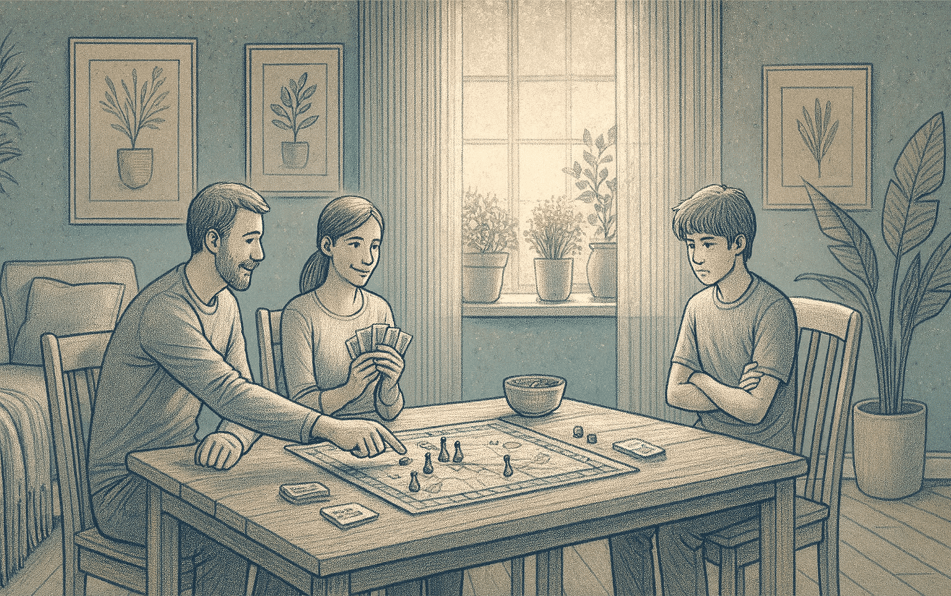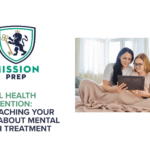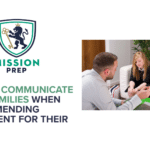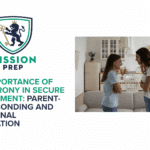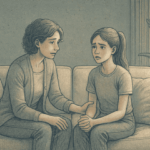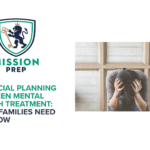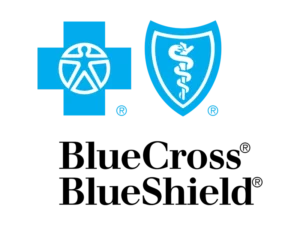Key Takeaways
- Passive-aggressive behavior in teens often masks deeper feelings of powerlessness, fear of conflict, or difficulty expressing emotions directly, making understanding the root cause essential for effective responses.
- Parents can break the cycle by staying calm, addressing behaviors directly but gently, and avoiding the temptation to match their teen’s indirect hostility with frustration or punishment.
- Clear expectations, consistent consequences, and modeling healthy communication help teens learn more effective ways to express their needs and feelings without resorting to passive aggression.
- Creating safe spaces for honest conversation and teaching assertiveness skills empowers teens to communicate directly rather than through indirect resistance or withdrawal.
- Mission Prep Healthcare offers family-focused therapeutic programs that help teens and parents develop healthier communication patterns and address underlying issues contributing to passive-aggressive behaviors.
Understanding Passive Aggression in Teenagers
Living with a passive-aggressive teen can feel exhausting. They’ll agree to something with a quick “sure” but then conveniently “forget” to follow through. Sometimes it shows up as the silent treatment, half-finished chores, or sarcastic remarks that sting more than they admit.
Passive aggression is a way of expressing negative feelings without saying them out loud. Instead of admitting they’re upset, teens show it through resistance that looks subtle but feels deliberate. This goes beyond ordinary teen moodiness; it becomes their default way of handling conflict.
Passive aggression often stems from feeling unheard, powerless, or nervous about direct confrontation. Many teens want to keep their parents happy while still pushing for independence, and that internal tug-of-war comes out as mixed signals and quiet defiance. Recognizing this can help parents respond with patience and understanding instead of just frustration.
Mission Prep Healthcare specializes in mental health treatment for teens aged 12-17, offering residential and outpatient programs for anxiety, depression, trauma, and mood disorders. Our therapies include CBT, DBT, EMDR, and TMS, tailored to each adolescent’s needs.
With a structured, supportive environment, we integrate academic support and family involvement to promote lasting recovery. Our goal is to help teens build resilience and regain confidence in their future.
Recognizing Passive Aggressive Behavior in Your Teen
Silent Treatment and Withdrawal
Your teen might shut down completely after a disagreement, refusing to engage in normal conversation or family activities. They’re physically present but emotionally absent, creating an uncomfortable atmosphere that affects the whole family.
Procrastination and “Forgetting” Responsibilities
Tasks that were clearly agreed upon somehow don’t get done, or they get done so late or poorly that it creates problems for everyone. Your teen might consistently “forget” to take out trash on pickup day or delay getting ready when the family has plans.
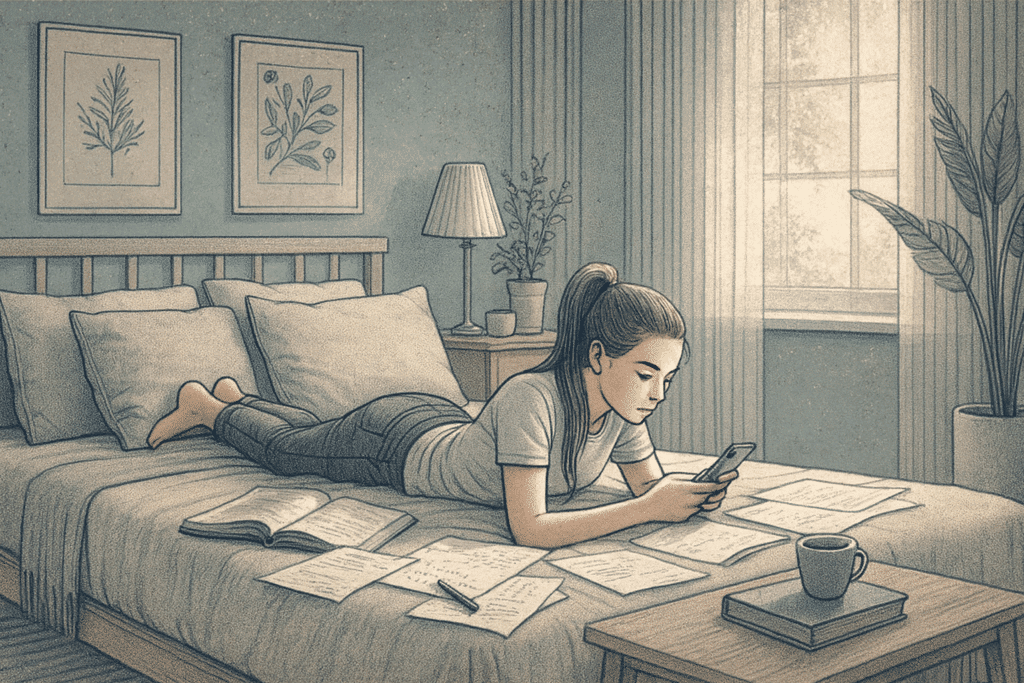
Passive-aggressive teens often use procrastination and selective memory as ways to express resistance without direct confrontation.
Sarcasm and Indirect Hostility
Comments that technically sound agreeable but carry an undertone of resentment. Phrases like “whatever you say” delivered with rolled eyes, or “fine, I’ll do it your way” said in a tone that clearly communicates the opposite.
Subtle Defiance and Compliance Without Cooperation
Your teen follows the letter of your requests but not the spirit. They might clean their room by shoving everything under the bed or participate in family activities with obvious reluctance that dampens everyone’s enjoyment.
The key identifying factor is the pattern of behavior that consistently creates tension, miscommunication, or incomplete follow-through, even when your teen appears cooperative on the surface.
Why Teenagers Become Passive Aggressive
Fear of Direct Confrontation
Many teens haven’t learned healthy ways to disagree or express dissatisfaction. They may have grown up in environments where direct disagreement led to harsh consequences, or they naturally have conflict-avoidant personalities. For these teens, passive aggression feels safer than risking direct confrontation.
Feeling Powerless or Unheard
Adolescents are developing autonomy while still being dependent on parents for major decisions. When teens feel like their opinions don’t matter or they have no real voice, passive aggression becomes a way to exert control. It’s their method of saying “I disagree” when they don’t feel safe saying it directly.
Learned Family Communication Patterns
If passive aggression is modeled in the family system, teens naturally adopt similar patterns. When parents or family members use indirect communication or the silent treatment to handle conflict, teens learn this is how disagreements get handled.
Developmental and Emotional Factors
The teenage brain is still developing emotional regulation and communication skills. Some teens simply don’t yet have the tools to identify their feelings clearly or express them appropriately. Passive aggression becomes their default when overwhelmed by emotions they can’t articulate.
Effective Strategies for Parents to Address Passive Aggression
Stay Calm and Don’t Take the Bait
Passive aggression is designed to provoke a reaction. When you respond with anger or your own passive-aggressive behavior, you reinforce the pattern and escalate conflict. Instead, take a deep breath and respond matter-of-factly without getting drawn into emotional manipulation.
Address Behavior Directly but Gently
Rather than ignoring the passive aggression, name what you see happening. You might say, “I notice you agreed to clean your room yesterday, but it’s still not done. Help me understand what’s going on.” This opens dialogue without attacking their character.
Set Clear Expectations and Consequences
Passive-aggressive teens often test boundaries through incomplete compliance or delayed responses. Having clear, specific expectations and following through consistently on natural consequences helps eliminate gray areas where passive aggression thrives.
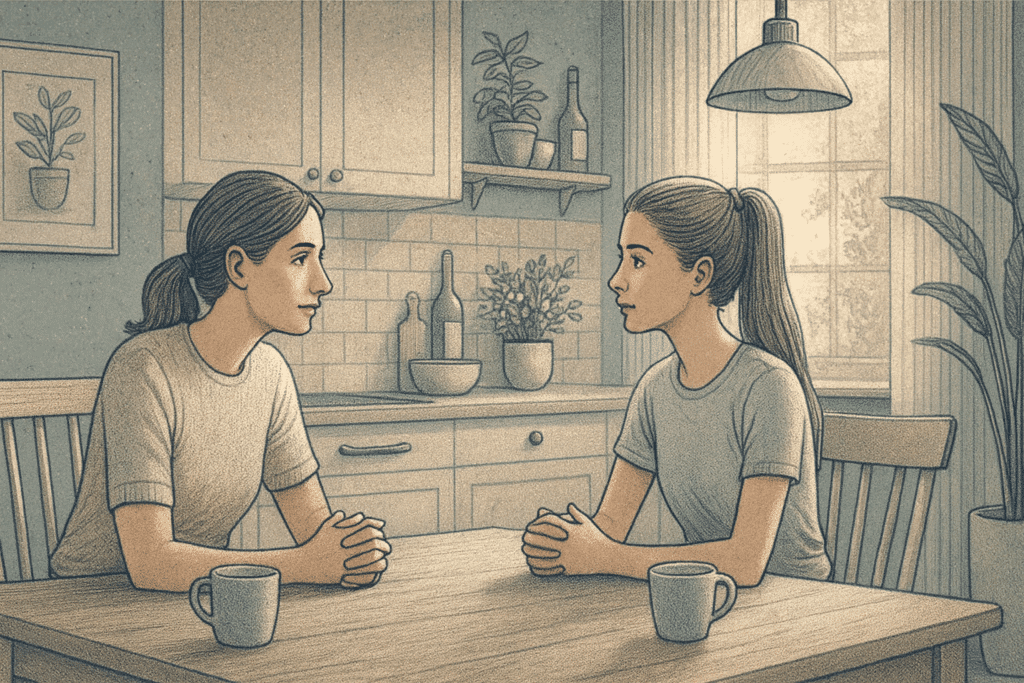
Clear communication and consistent follow-through help reduce the confusion and testing that often fuel passive-aggressive behavior patterns.
Model Healthy Communication
Show your teen what direct, respectful communication looks like. When you disagree with your spouse, express your feelings clearly. When you’re frustrated with your teen, speak directly about your concerns rather than using guilt trips or indirect comments.
Don’t Enable the Behavior
Avoid doing tasks for your teen when they use passive aggression to avoid responsibility. If they “forget” to do laundry and have no clean clothes, let them experience that natural consequence rather than rushing to solve the problem.
The goal is to make passive aggression an ineffective strategy while teaching and reinforcing more direct communication methods.
Building Better Communication with Your Passive Aggressive Teen
Creating Safe Spaces for Honest Conversation
Teens need to know they can express disagreement or frustration without facing harsh consequences. Regular one-on-one time, family meetings where everyone gets to speak, or simple car ride conversations can provide natural opportunities for more open communication. The key is listening without immediately trying to fix or dismiss their feelings.
Teaching Assertiveness Skills
Many passive-aggressive teens simply don’t know how to express their needs or disagreements directly. Teaching phrases like “I feel frustrated when…” gives them tools for more effective communication. Role-playing different scenarios can help teens practice assertive communication before they need these skills during actual disagreements.
Encouraging Emotional Expression
Help your teen identify and name their emotions. Sometimes passive aggression stems from feeling overwhelmed by emotions they can’t articulate. Regular check-ins about feelings or family discussions about emotions can build emotional vocabulary and awareness.
Building these communication skills takes time and patience, but it addresses root causes of passive-aggressive behavior rather than just managing symptoms.
When to Seek Professional Help
While many families can work through passive-aggressive patterns with patience and consistent strategies, sometimes professional support is needed.
If your teen’s passive-aggressive behavior is severely impacting family relationships, school performance, or their ability to maintain friendships, it may indicate deeper issues needing professional attention. Other red flags include behaviors escalating over time or occurring alongside other concerning behaviors like depression or anxiety.
Individual therapy can help teens develop emotional awareness, communication skills, and healthier coping strategies. Family therapy addresses communication patterns within the family system and helps everyone learn more effective ways to handle conflict and express needs.
Why Mission Prep is Your Partner for Communication Challenges

Mission Prep’s family therapy programs focus on building healthier communication patterns that help everyone feel heard and respected.
When passive-aggressive behavior becomes a persistent pattern affecting your family’s well-being, Mission Prep Healthcare provides specialized support designed to help teens and families develop healthier communication and relationship skills.
Our programs serve adolescents ages 12 to 17 through residential, outpatient, and telehealth services that address communication challenges, emotional regulation difficulties, and family dynamics. We understand that passive-aggressive behavior often signals underlying struggles with emotional expression or feeling heard and valued.
What makes Mission Prep different is our comprehensive approach that involves the entire family in the healing process. Our experienced clinical team helps teens develop emotional awareness, assertiveness skills, and direct communication abilities while supporting parents in creating family environments that encourage honest expression.
Our therapeutic environments feel welcoming and safe, making it easier for teens to open up about their real feelings rather than expressing them through passive-aggressive behavior. We believe that when teens feel genuinely heard and valued, they naturally develop more direct and healthy ways of communicating.
Frequently Asked Questions (FAQ)
How can I tell if my teen’s behavior is passive-aggressive or just a normal teenage attitude?
Passive aggression involves a consistent pattern of indirect resistance, “forgetting” responsibilities, and subtle defiance that creates ongoing tension. A normal teenage attitude is more direct and episodic. If you’re constantly feeling frustrated by incomplete compliance, it’s likely passive aggression.
Should I confront my teen about their passive-aggressive behavior?
Yes, but gently and directly. Name what you observe: “I’ve noticed you’ve agreed to help with dinner but haven’t followed through this week. Let’s talk about what’s happening.” This opens dialogue rather than creating defensiveness.
Why does my teen agree to things they don’t plan to do?
Teens often agree to avoid immediate conflict but then express their real feelings through non-compliance. They may fear direct disagreement or feel powerless to negotiate. Teaching them it’s okay to express concerns upfront helps reduce this pattern.
What programs does Mission Prep offer for communication challenges?
Mission Prep provides residential, outpatient, and telehealth programs for teens ages 12–17, focusing on communication skills, emotional regulation, and family dynamics. Our approach includes individual and family therapy designed to address the underlying causes of passive-aggressive behavior and build healthier relationship patterns.


